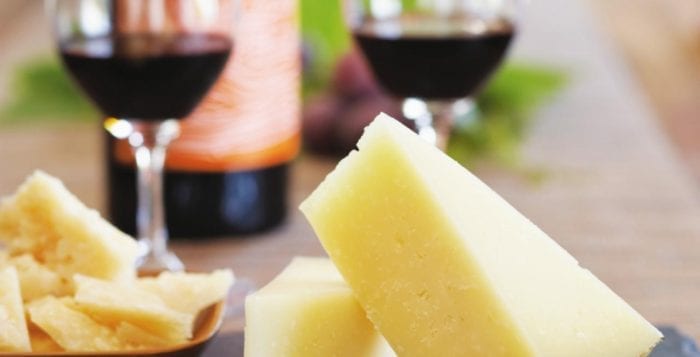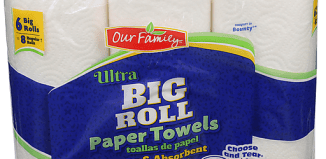Wine and Cheese: Pairing wine with Monterey Jack cheese
By Bob Lipinski

Monterey Jack, a cow’s milk cheese, was developed in the 1880s in Monterey by a Scot merchant named David Jacks. He derived the name, Monterey Jack, from the shipping point, Monterey, California, and his last name, Jacks, minus the “s.” There are, however, several other versions as to the origin of Monterey Jack cheese.
Although the cheese was first developed and sold in Monterey, it is now produced in several other states and with variations from dairy to dairy. Most Monterey Jack has an inedible rind, often black in color. The rind is sometimes coated with a mixture of oil, pepper and cocoa. It generally has a pale yellow-orange interior with numerous small holes. It is rectangular or wheel shaped, depending on the preference of the dairy.
The cheese has a sweet, nutty flavor with a tart aftertaste, similar to cheddar. When old, the taste becomes sharp and tangy. It is sometimes flavored with caraway seeds, dill, fennel or jalapeño peppers. It has a semihard texture and when labeled “Dry Jack,” it is a hard, tangy cheese suitable for grating.
Dry Jack cheese is Monterey Jack that has been aged 6 to 9 months or longer. It came into existence during World War I, when San Francisco cheese wholesaler, D.F. DeBernardi found his Monterey Jack cheese had aged too long and “gone hard.” Italian immigrants immediately found it useful because it could be grated like Parmigiano-Reggiano or pecorino.
Monterey Jack is also called Sonoma Jack (brand name), California Jack or Jack. The cheese can be paired with syrah, merlot, zinfandel, and, of course, cabernet sauvignon.
Four California wines I recently tasted would pair quite well with a wedge of Monterey Jack. My tasting notes follow:
2010 Mayacamas, “Mt. Veeder” Cabernet Sauvignon: (blend of 95 percent cabernet sauvignon, 5 percent merlot; aged 36 months in oak). Full bouquet with flavors of dried berries, herbs, black currants, dill and coffee. Full bodied, tannic and still quite youthful.
2012 Inglenook “Cask” Rutherford, Cabernet Sauvignon: (blend of 85 percent cabernet sauvignon, 12 percent cabernet franc, 3 percent merlot; aged 18 months in oak). Dark colored with a bouquet brimming with berries (blackberry and blueberry), black cherries and black currants. Layers of fruit; great depth of flavor with plenty of acidity.
2013 Hourglass “Blueline Estate” Merlot, Calistoga: (blend of 84 percent merlot, 12 percent cabernet sauvignon, 4 percent malbec; aged 2 to 3 years in oak). Deepest color, very fruity with hints of plums, chocolate and spices. Quite smooth and elegant with toasted oak on the finish.
2012 Snowden “The Ranch” Napa Valley, Cabernet Sauvignon: (blend of 75 percent cabernet sauvignon, 14 percent merlot, 8 percent cabernet franc, 3 percent petit verdot; aged 18 months in oak). Great depth of color; fruity and powerful with a certain sweetness; concentrated flavors and very complex with overtones of dark chocolate, oak and black currants.
Bob Lipinski, a local author, has written 10 books, including “101: Everything You Need to Know About Whiskey” and “Italian Wine & Cheese Made Simple,” available on Amazon.com. He conducts training seminars on wine, spirit and food and is available for speaking engagements. He can be reached at www.boblipinski.com or [email protected].







